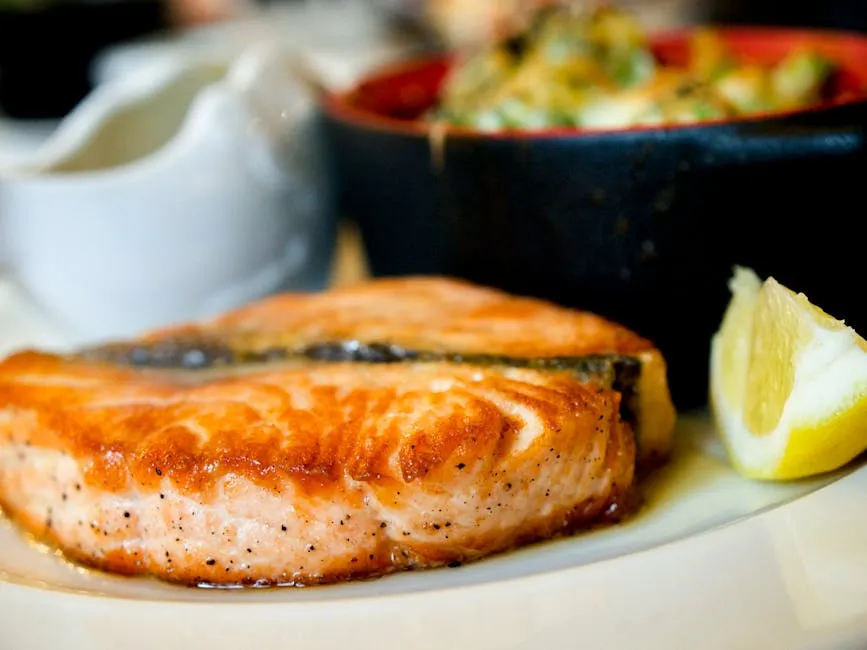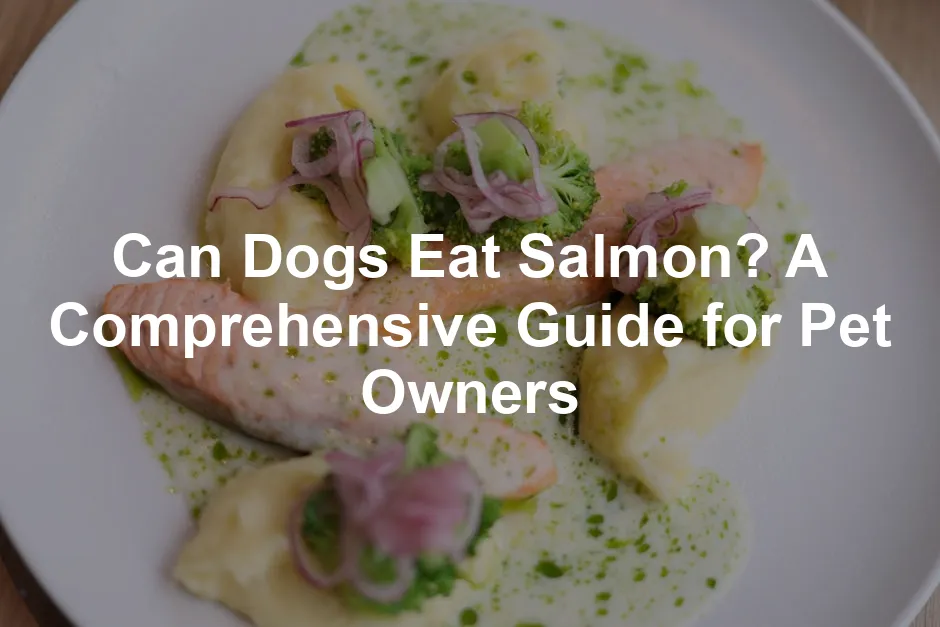Introduction
Salmon is a popular fish choice among pet owners. Its rich flavor and nutritional benefits make it appealing for dogs too. Packed with omega-3 fatty acids, salmon supports your dog’s overall health. But is it safe? Understanding safe feeding practices is crucial. Always consult your veterinarian before giving your dog new foods.
If you’re looking for a quick and easy way to incorporate salmon into your dog’s diet, check out these salmon fillets. They are a fantastic treat that your dog will love!
Summary and Overview
In this article, we will cover everything you need to know about feeding salmon to your dog. We will discuss the safety of salmon, its benefits, how to prepare it, portion control, and potential risks. Remember, moderation is key! Salmon is becoming increasingly popular in dog foods, so it’s worth your attention.
Is Salmon Safe for Dogs?
Yes, salmon can be safe for dogs when prepared correctly. However, raw salmon poses a risk of salmon poisoning disease. This condition, caused by a parasite, can be fatal if untreated. Symptoms include vomiting, diarrhea, and lethargy. Cooking salmon thoroughly eliminates these risks. Always serve well-cooked, boneless salmon without any seasonings. Consult your vet for personalized advice on introducing salmon into your dog’s diet.
Statistics show that salmon poisoning cases are rare but can occur, especially in areas where dogs have access to raw salmon. Always prioritize your dog’s health by ensuring they eat safely. Salmon can be a delicious and nutritious treat for your furry friend, but remember to consult your vet before introducing it into their diet.
For a convenient option, consider canned salmon in water. It’s easy to add to your dog’s meals without the hassle of cooking!

Nutritional Benefits of Salmon
Salmon offers numerous health benefits for dogs, thanks to its impressive nutritional profile. It is rich in omega-3 fatty acids, which are vital for maintaining healthy skin and a shiny coat. These essential fatty acids also help reduce inflammation and support joint health. For dogs suffering from arthritis or skin allergies, salmon can provide relief and improvement in their condition. Best supplements for dogs with joint pain and arthritis can also complement the benefits of salmon.
Incorporating salmon into your dog’s diet can provide essential nutrients that support their overall health. Best supplements for dogs with joint pain and arthritis are also beneficial for dogs with specific health concerns.
In addition to omega-3s, salmon is an excellent protein source, crucial for muscle development and tissue repair. Each serving of salmon contains essential vitamins like B12, important for brain health and energy levels. Vitamin D, found in salmon, aids in calcium absorption, contributing to strong bones and teeth.
A study shows that salmon contains more omega-3 fatty acids than chicken or beef, making it a superior protein choice. Regularly incorporating salmon into your dog’s diet can boost their immune system and overall vitality. However, moderation is essential to prevent digestive upset. Always consider your dog’s unique needs and consult your vet for tailored nutrition advice.

By understanding these nutritional benefits, you can make informed decisions about your dog’s diet. Salmon can be a fantastic treat that enhances their health and well-being when prepared and served correctly. If you want to learn more about dog nutrition, consider reaching out to your veterinarian or exploring reputable resources on canine dietary needs.
How to Prepare Salmon for Your Dog
Cooking salmon for your furry friend can be a delightful experience. Start with fresh salmon fillets. You can grill, bake, or poach the fish. Each method retains the salmon’s nutrients while ensuring it’s safe for dogs.
When cooking, always remove any bones. Small bones can pose a choking hazard or cause digestive issues. Avoid adding any seasonings like salt, garlic, or onion, as these can harm your pet.
If you’re looking for a safe way to check the cooking temperature, consider investing in a pet-safe cooking thermometer. It ensures your salmon reaches the perfect internal temperature for your dog!
Remember, salmon should be cooked to an internal temperature of 145 degrees Fahrenheit to kill any harmful bacteria. This preparation ensures your dog enjoys a healthy, tasty treat. Try this simple salmon recipe for your dog!

Portion Control: How Much Salmon Can Dogs Eat?
Portion control is essential when feeding salmon to dogs. The right serving size depends on your dog’s weight. For extra-small dogs (2-20 pounds), 1-2 ounces of salmon per week is ideal. Small dogs (21-30 pounds) can have 2-3 ounces weekly. Medium dogs (31-50 pounds) should be offered 3-4 ounces, while large dogs (51-90 pounds) can enjoy 4-6 ounces.
Extra-large dogs (over 90 pounds) can safely consume 6-8 ounces of salmon each week. Salmon should be treated as an occasional treat, not a daily food. Feeding it once a week is a good guideline.
Watch for signs of overconsumption, like digestive upset or lethargy. Always consult your veterinarian to establish the best feeding plan for your dog. Use our serving size guide to feed your dog safely!

Special Considerations: Can Dogs Eat Salmon Skin?
Salmon skin can be a tasty treat for dogs. It contains omega-3 fatty acids, which can benefit their skin and coat. However, ensure the skin is thoroughly cooked and free from seasonings.
Raw salmon skin can harbor harmful bacteria and should be avoided. Cooking it makes it safe but serve in moderation. Start with small pieces to monitor your dog’s reaction.
For a crunchy option, consider salmon skin dog treats. They’re a delicious and healthy way to give your pup a taste of salmon!

Risks and Precautions When Feeding Salmon
Feeding your dog salmon can be a healthy treat, but it’s not without risks. Understanding these risks is crucial for your furry friend’s well-being.
First, let’s discuss raw versus cooked salmon. Raw salmon can harbor harmful parasites, particularly the Neorickettsia helminthoeca. This parasite can lead to salmon poisoning disease, a serious condition that may be fatal if untreated. Symptoms include vomiting, diarrhea, and lethargy. Cooking salmon thoroughly destroys these parasites, making it safe for your dog.
Next, consider allergies or sensitivities. Some dogs may be allergic to fish, including salmon. If your dog experiences itching, gastrointestinal upset, or other unusual symptoms after eating salmon, consult your veterinarian immediately.
Additionally, be aware of the signs of salmon poisoning. If your dog shows symptoms like vomiting, diarrhea, or weakness after consuming salmon, seek veterinary care right away. Early intervention is vital for effective treatment.
Statistics indicate that salmon poisoning cases are rare, but they do occur, particularly in regions where dogs access raw salmon. Always prioritize your dog’s health by ensuring they consume only cooked salmon.
In summary, while salmon can be a nutritious option, follow safe practices when feeding it to your dog. For more detailed advice on dog food safety, download our guide on dog food safety.
Conclusion
In conclusion, salmon can be a fantastic addition to your dog’s diet when prepared and served correctly. Its nutritional benefits are well worth considering, but moderation is key. Always consult your veterinarian before introducing new foods, especially if your dog has existing health concerns or dietary restrictions. By doing so, you can safely explore salmon as a healthy treat option for your beloved pet.
FAQs
Can dogs eat raw salmon?
No, dogs should not eat raw salmon. Raw fish can carry a parasite called Neorickettsia helminthoeca, which causes salmon poisoning disease. This illness is potentially fatal and can lead to severe symptoms like vomiting, diarrhea, and lethargy. Always make sure to cook salmon thoroughly before serving it to your dog.
How often can I feed my dog salmon?
Salmon should be treated as an occasional treat. It’s best to offer it once a week. This frequency ensures your dog benefits from its nutrients without overdoing it. Remember to adjust the serving size based on your dog’s weight and dietary needs.
Is smoked salmon safe for dogs?
Smoked salmon is not safe for dogs. It often contains added salts and preservatives that can be harmful to your pup. High sodium levels can lead to health issues, including increased thirst and urination. Stick to plain, cooked salmon to keep your dog safe.
What are the signs of salmon poisoning in dogs?
Signs of salmon poisoning include vomiting, diarrhea, lethargy, weakness, and fever. If you suspect your dog has consumed raw salmon or shows any of these symptoms, contact your veterinarian immediately. Early intervention can be crucial for recovery.
Can dogs have salmon oil?
Yes, dogs can benefit from salmon oil. It’s a great source of omega-3 fatty acids, which support skin health, reduce inflammation, and improve joint function. Always choose high-quality salmon oil supplements and consult your vet for appropriate dosage to ensure safety.
Is it safe to feed my dog canned salmon?
Canned salmon can be safe for dogs if it’s packed in water and doesn’t contain added salts or preservatives. Always check the label for sodium levels. Rinsing the salmon can help remove excess salt. This makes it a convenient option for a nutritious treat.
What other fish can dogs eat?
In addition to salmon, dogs can safely enjoy fish like sardines, mackerel, and trout. These fish are rich in omega-3 fatty acids and can provide health benefits. Always ensure the fish is cooked and free of bones before serving.
What Other Fish Can Dogs Eat?
While salmon is a fantastic option, your dog can enjoy other fish too. Sardines are a popular choice packed with omega-3 fatty acids. These little fish can boost your dog’s heart health and promote a shiny coat. Plus, sardines are typically low in mercury, making them a safe option. Consider getting sardines in water for a nutritious treat!
Mackerel is another excellent fish for dogs. It’s rich in protein and omega-3s. This fish can help reduce inflammation and support joint health. Just like sardines, ensure they’re cooked and free of bones. If you’re interested in mackerel, check out these mackerel fillets.
Trout is also safe for dogs. This fish is high in protein and provides essential vitamins. Cooked trout can support your dog’s immune system and overall well-being. You can find trout fillets easily on Amazon!
Always check for bones and avoid seasoning. Fish like these can be a great addition to your dog’s diet. They offer unique health benefits while keeping mealtime interesting. So, why not give them a try? Your furry friend might love the variety!

Please let us know what you think about our content by leaving a comment down below!
Thank you for reading till here 🙂
All images from Pexels





